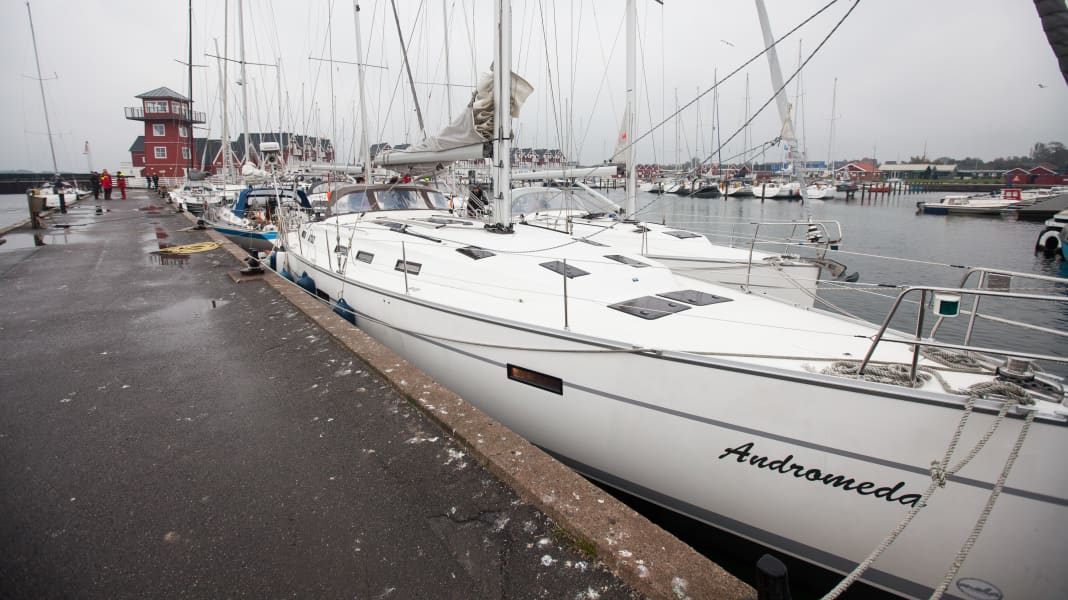
Also on board in mid-July was YACHT photographer and author Christian Irrgang, who documented the week-long research trip on the Bavaria 50 "Andromeda" for Reporter im Bild. An unexpected and exciting adventure for him. "We were at the locations, as far as they could be reconstructed, in Wiek on Rügen and Christiansø east of Bornholm. The reporters spoke to ex-combat divers, security specialists and harbour masters in Germany, Denmark and Poland." Apart from the skipper, Irrgang was the only sailor on board.
They set off from Hohe Düne and then followed the course of the trip, which was undertaken by five men and one woman. "It was really exciting to hear what the journalist teams had already researched and how they interpreted their findings."
Because that was quite different. In the articles that are now online, for example in the ARD media library and with Spiegel-Online the two reporting teams come to different conclusions. While the Frontal team spoke to Danish security analysts and pointed out that only 5 days before the time of the crime, two Russian special ships were travelling alongside the sailing yacht, one of which had a deployable mini-submarine and temporarily switched off the AIS, this information is missing in the Spiegel article. The Hamburgers, on the other hand, emphasise more strongly that the trail leads to the Ukraine.
"I just wondered why you would use a sailing yacht of all things for such demanding work in the middle of the open sea," says Irrgang. There are also motor yachts, which are no longer unusual on the Baltic Sea and would be much more practical." It was also exciting to hear an ex-combat diver explain the possible manoeuvre. The yacht crew would presumably have set a buoy, the bottom weight at a depth of 80 metres directly on the pipeline. From there, the diver might have dived with three bottles of oxygen and could have attached the charge with a timer. Then resurface with decompression breaks. About one job for three hours, according to the estimate. Later, the whole thing was repeated at the other attack sites.
Former combat divers explain exactly how the mission might have unfolded
The reporters see evidence in favour of Ukraine's involvement in the warning issued by the Dutch secret service three months before the attack, which predicted an attack by a commando in a sailing boat on the Baltic Sea. The German investigators also found traces of the same explosives that could be detected at the bottom of the pipeline. "I then asked myself whether professionals are really so stupid as to portion out the explosives on the saloon table, as they know that something like this can be detected later," says photographer Irrgang.
Ultimately, of course, the trip cannot prove anything, but the 36-minute-long Frontal 21 report in particular is a fascinating journey that sounds like a classic, exciting spy thriller, if it weren't for the fact that the two gas pipelines were blown up last autumn and the Ukraine war had such a sad background.
Another question was also not answered: almost all charter yachts in the world today sail with GPS transmitters discreetly hidden on board, which regularly send the position data of the charter ships to the charter company via SIM cards or even satellite access. This is standard practice in the industry, at least in the Mediterranean. In this way, thefts, as well as groundings, can be reconstructed using acceleration sensors and the traceability of the exact course. Was this also the case on the "Andromeda"? Are the dive pauses documented exactly like this?
But that's the way it is with major dramas at sea, such as the sinking of the "Estonia". There are still various theories as to how it sank, ranging from a blast to a tragic accident. But that too will probably remain a mystery of the sea...

